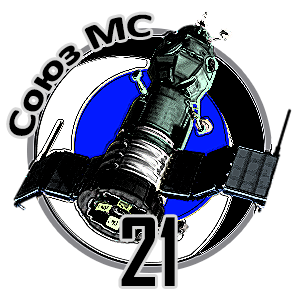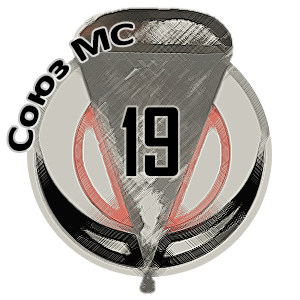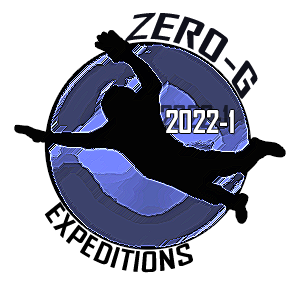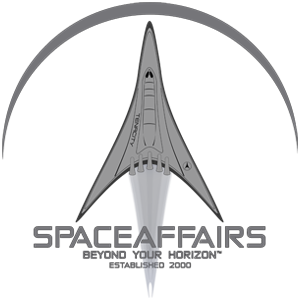
Soyuz TMA-12 Space Expedition
VIP-Tour
by Werner Strasser (CH) Juli 2008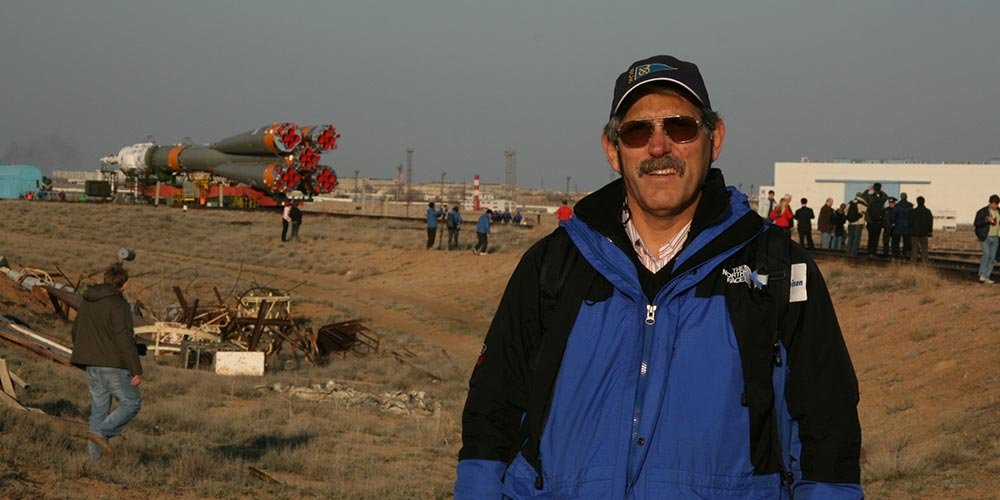 Born in 1954, I wanted to give me a 54th round Birthday special and a kind of grudge. From my youth on, space and rocket technology is fascinating me. My father stood with us guys each night under the open sky, to see the Russian Sputnik above us. Apparently, we have also followed the entire Apollo program on black and white tv-screens. In the 70s and 80s, then around the course from museum to museum. That was interesting, but the last kick was missed. I wanted to see a rocket launch!
Born in 1954, I wanted to give me a 54th round Birthday special and a kind of grudge. From my youth on, space and rocket technology is fascinating me. My father stood with us guys each night under the open sky, to see the Russian Sputnik above us. Apparently, we have also followed the entire Apollo program on black and white tv-screens. In the 70s and 80s, then around the course from museum to museum. That was interesting, but the last kick was missed. I wanted to see a rocket launch!
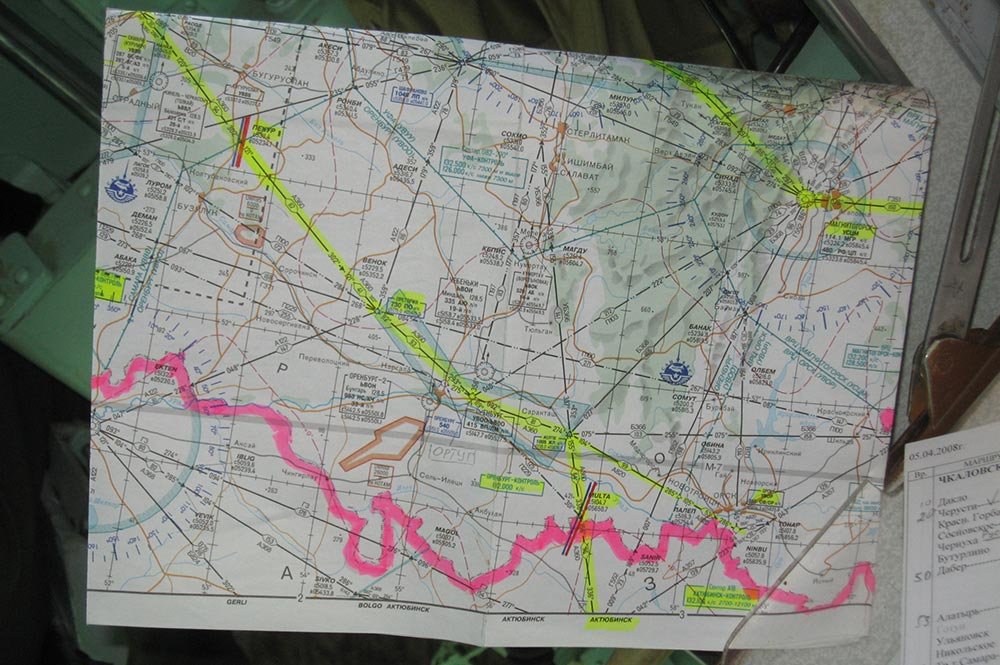 The flight route to Baikonur
The flight route to BaikonurFour attempts I needed until I finally watched the STS-96 mission on October 20th in 1998, as Senator John Glenn flow again into space. At the end of the 90th, the iron curtain was coming down, and it seems, that suddenly things were possible what was previously unthinkable. And Russia opened the doors and gates. So would it be possible for to see a liftoff in Russia, so my thoughts?
The Internet led me to Andreas Bergweiler and his specialists- A few emails back and forth show me very quickly, that I'd reached someone who has the right knowledge of space - at present and for the history, he has the necessary experience and contacts in Russia to the makers of the Russian aerospace. My most asked question was (again and again): Will the liftoff with the Soyuz follow up the plan for the liftoff? Andreas assured me that unlike the U.S., the Russians put their Soyuz Spacecraft mostly just in time into space with very rare cancellations or final moves in the past. So I booked. Now I was even tenser. What do the Russians in other ways, unlike the Americans?
Soyuz TMA-12 Baikonur ExpeditionEven, the procurement of the visa, was a bit adventurous affair. But Space Affairs is well organised and with particular letters and invitations from Moscow and other channels together with the Russian Embassy in Switzerland it had already this the first hurdle adequately folded. So the feelings for the trip were excellent.
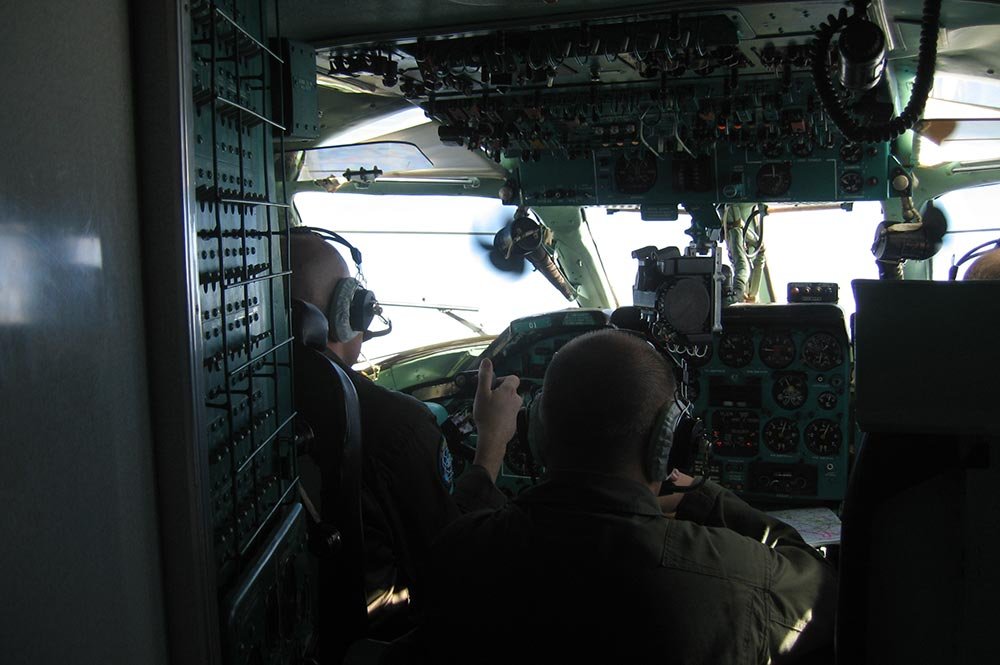 A view into the cockpit TU-134
A view into the cockpit TU-134Because I travel to Russia with commercial activities and also wanted to combine a very narrow window of time had, I inquired Space Affairs with a special wish, if it would be possible to do the Energia Space Museum visit before the visit of Star City and Baikonur, instead of as of the end of the journey. Indeed, it is not an easy task, the Energia Space Museum is at the plant of Energia Space, and this is still within a safety zone.
Andreas, thanks to his relationship and his network, desires this promptly complete. This museum is an absolute must for space enthusiasts. Here you will find a great many artefacts of human spaceflight what were the first time in space.
On Thursday the 3rd April 2008, I met after my Energia Space Museum visit day then the whole tour group at the hotel Soyuz northeast of Moscow. We were six people with very different CVs but a common goal, we wanted to see how the Russians are accomplishing the manned spaceflight. All of the group had seen Cape Kennedy; now the difference was asked.
On 4 April, so my round birthday, we visited the Gagarin Cosmonaut Training Center. Besides the impressive facilities with the most massive centrifuge in the world and the hydrolab, we saw at the cosmonaut training centre the rehearsal of procedures. Nowhere you can come closer!
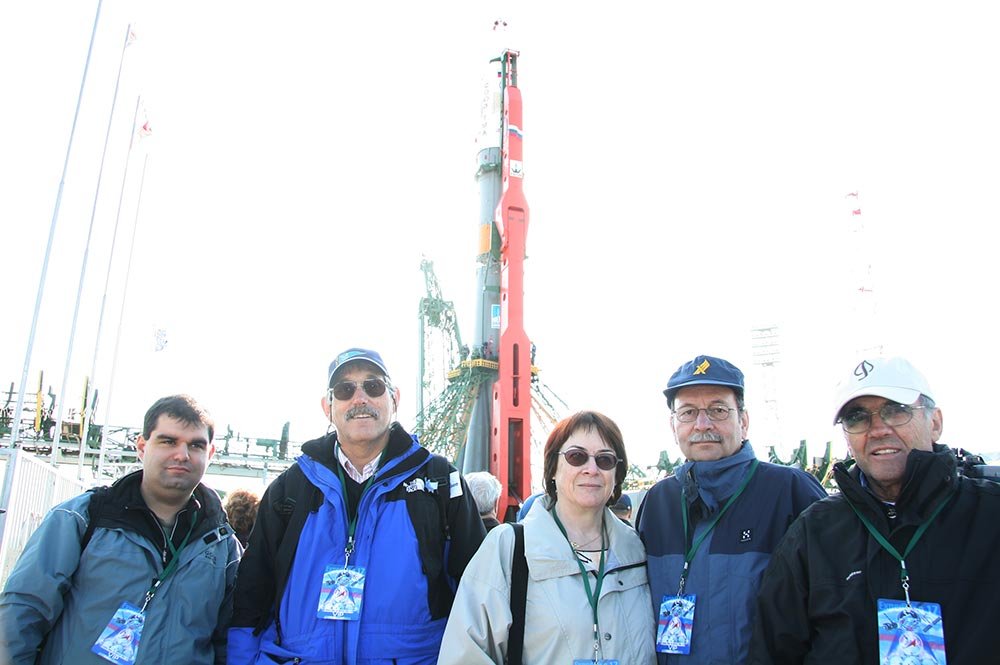 Some of the participants on the Gagarinsky Launchpad
Some of the participants on the Gagarinsky LaunchpadOn Saturday the 5th April then, we flew with an official aeroplane of the GCTC from Moscow to Baikonur. No public airline in the world can offer this flight experience. The machine, a TU 134, was defective, we had to wait. With a selenium quietness cycled a mechanic in front of our eyes to a different machine, comprising the same type, built out the damaged landing light, cycled on the tarmac back and built the landing light on our machine. Then, the machine was ready.
With a little delay, the flight went off. So sure, I have rarely felt the people were professionals and knew what they were doing. The many cosmonauts and government members on the same machine were also the best guarantees for serious work. The experience of the flight in this aeroplane is an experience, what you never get in our regions! Through the glass pulpit Cockpit, we were able to fly from the perspective of the navigator long past time watching. Andreas set up a smoke corner, and as there some Caucasian cognac appeared, the trip was finally no longer be topped. The landing in Baikonur and the transfer to the hotel were purely routine.
On Sunday 6th April followed the much-awaited rollout of the Soyuz rocket with the Soyuz capsule already assembled. At dawn, the gate at of the assembly hall opened, and the Soyuz combination was lying on a railway with a diesel locomotive for starting withdrawn. Compared with an American rocket, Soyuz is tiny. And the effect is the same, as those monster-American, it shot through my head. Unlike Americans pile the Russians are not build up different rocket stages, they bundle identical units on the scale. If you think about, to stack six cans of beer on each other or side by side, it appears logical.
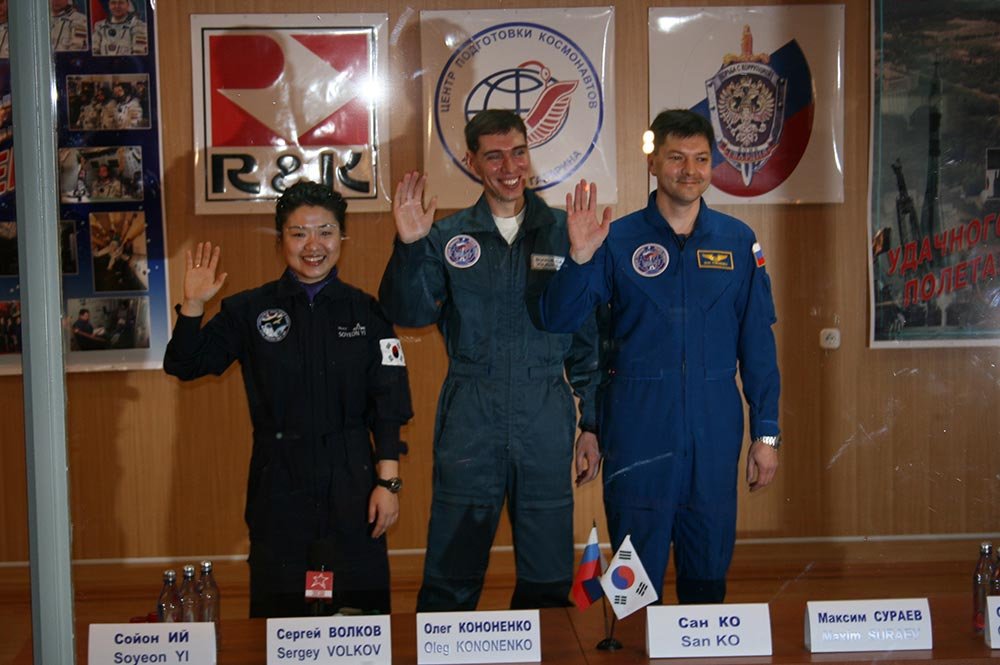 The crew of Soyuz TMA-12: Soyeon Yi, Sergey Volkov and Oleg Kononenko
The crew of Soyuz TMA-12: Soyeon Yi, Sergey Volkov and Oleg KononenkoWith the dawn of the day, I could then also plainly recognise the surroundings. The buildings are partially in a neglected state, and much scrap is around. The money of today's civil space is much scarcer than the funds of military space at the time of the Cold War. This impression is substantiated during a visit to some of the scrapped launch ramps and launch pads of Proton, Buran and Energia rockets. At its launch pad Soyuz arrived, the unit is pushed via a single hydraulic cylinder from the horizontal to the vertical on the pad. Voila, the rocket stood perfectly, beautifully and elegantly on its launch base. It followed over the next two days the completion of refuelling, beside this, we understandably could not be present.
On Monday the 7th April, we had the press conference of the cosmonauts. The primary and the secondary crew. As we read in the European press, the original Korean cosmonaut was replaced because of espionage by a Korean colleague. For the two Russian cosmonauts of the secondary crew, it was clear that they will be on their flight on the next liftoff in September/October. For the Korean cosmonaut, it was equally clear that he will never fly into space.
In the afternoon we visited another launch pads and test centres. In all frankness showed us the Russians also the location of their most significant misfortune. General Nedelin made here in the 60s so much pressure on his workers and engineers in a race against time that there were gone something wrong, and the rocket exploded. The most significant accident on Earth inside the space history, until today, ever. 147 people were killed in the explosion of the fuel, as the second stage ignited on the pad!
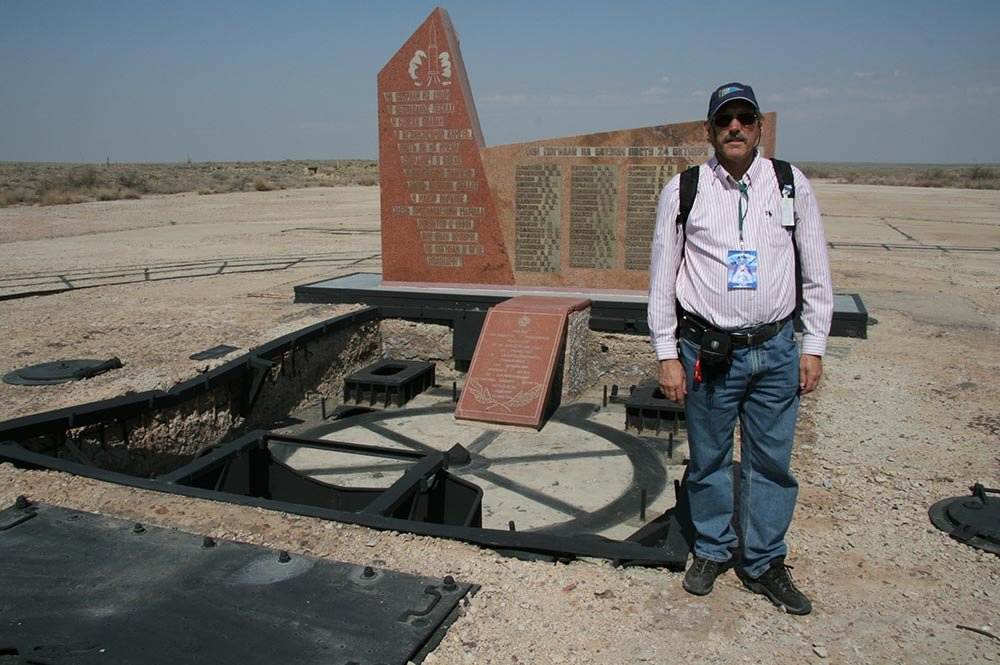 Werner Strasser at the Nedelin Monument - Pad#34
Werner Strasser at the Nedelin Monument - Pad#34Incredible was the visit of the Soyuz assembly hall. We were in direct contact with the next two missiles which are already in the assembly stage. Here is the following big difference between the Russian space technology to the Americans. The Russians practice series, the Americans architecture constructions. An American Rocket is never similar to another, on the Russian side, a rocket is identical to the other, and this since over 40 years! Overall, more than 1000 units built Soyuz. What is the American proverb? Don't touch it, if it works.
At night we took together with our French friends and the group of the United States a dinner in a Kazakh Gyr, a yurt. The talks were fascinating. The Germans have invented the rocket technology; the Americans were the first on the moon, and the French has their hands together with other ESA members on the Ariane rocket. And we Swiss? After all, the payload hull of the Ariane is from Switzerland; I had myself not entirely hide. With space program, Apollo 18-Soyuz 19, 15 July 1975 (ASTP-Program) began the end of the East-West conflict in space, and now it this evening in a worthy continuation of this yurt at Baikonur in Kazakstan.
On Tuesday the 8th April then finally the absolute highlight, the liftoff was standing in front of the door!
First, we were able to see the test of the Sokol pressure suits. Again, Andreas knew the details; he guided us to watch in a particular corner. What happens there? The men smoked with the cosmonauts and their physicians their last cigarette before they slipped into the space suit!
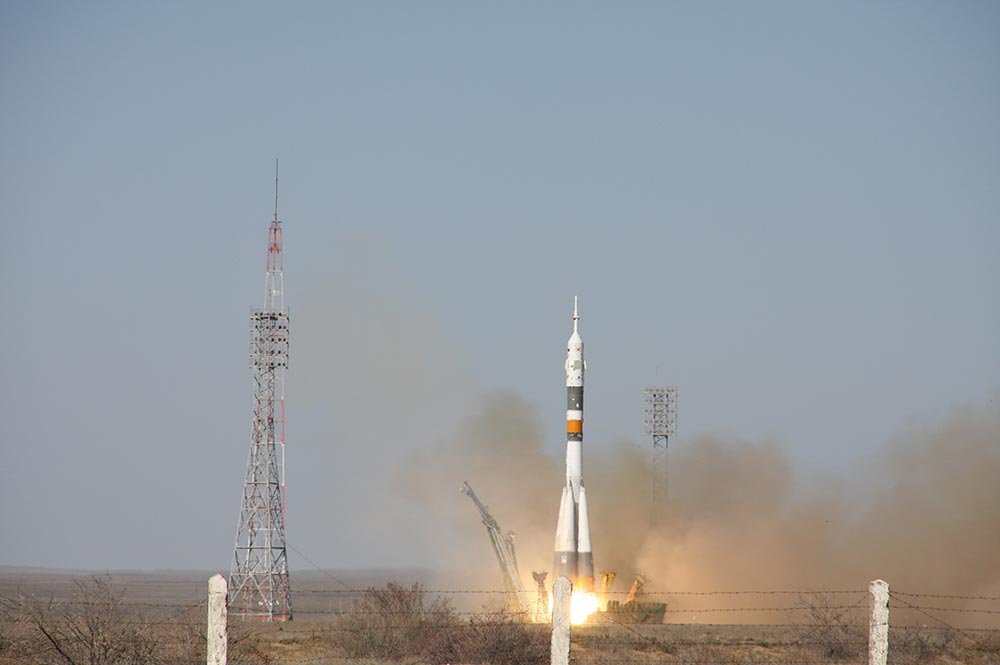 Lift-Off Soyuz TMA-12
Lift-Off Soyuz TMA-12Surrounded by the prominence of the Russian and the American space programs we were a part of the action. The whole thing seemed like a family occasion; everyone knew everyone and even our guide Andreas also. Shaking hands and smiles everywhere! We came barely after shooting with photos, Valentina Tereshkova, the first woman in space, Alexei Leonov from the Voskhod-2 was the first person who performed a spacewalk in 1965.
Sergei Krikalov, the 'forgotten' cosmonaut, appeared. He started as a colonel of the USSR and landed as a CIS member. During his time onboard the MIR space station, the Soviet Union disappeared. So, it was no wonder he held with 311 days in space a record for the longest spaceflight until he was outbid from Valeri Polyakov with Soyuz TM-18 with 437 days during one time in space. However, Krikalov performed six spaceflights until today, and so he is the world champion: 803 hours, 9 hours and 39 minutes! And Energia took our photo of our group of the farewell of the cosmonauts on the Internet. So we are a part of the history of detention of the Soyuz TMA-12!
Towards the spectators' gallery, we visit the Baikonur Space Museum and the Korolev cottages. The museum is extremely modest and looks like a little bit forgotten in the steppes, but precisely it belongs to, here near the launch pad and launches control centre. In front of the building is a Buran, the Russian counterpart to the Space Shuttle. Another copy will be in the next time at the Science and Technology Museum in Speyer/Germany.
The launch itself, we could attend from a distance of less than 2 km. The officials offered us places in the VIP view stands. Andreas recommended avoiding this friendly. Why? The roof would be given us a strictly look out of the roof of the stands.
Also, the Russians are not counting a countdown over the loudspeakers as at the United States. Commands in Russian are given, only the last 3 seconds they count. The rocket stands majestically in front us in the steppe of Kazakstan. Steel blue, cloud-free skies, bright sunshine. Better the conditions for us viewers can't be!
Eventually, like all present people around me knew what comes next. Suddenly wristwatches were consulted. Then the liftoff! Prompt black smoke under the rocket, then ignition. Rapidly developed into a gigantic fireball, a loud, dull sound, the rocket lifted jerky and very slowly. On a fireball sitting accelerated it and shot into the steel blue sky. From the naked eye, we were able to see the separation of the four booster rockets. Still, we saw a fireball, and there it goes, and it blows away.
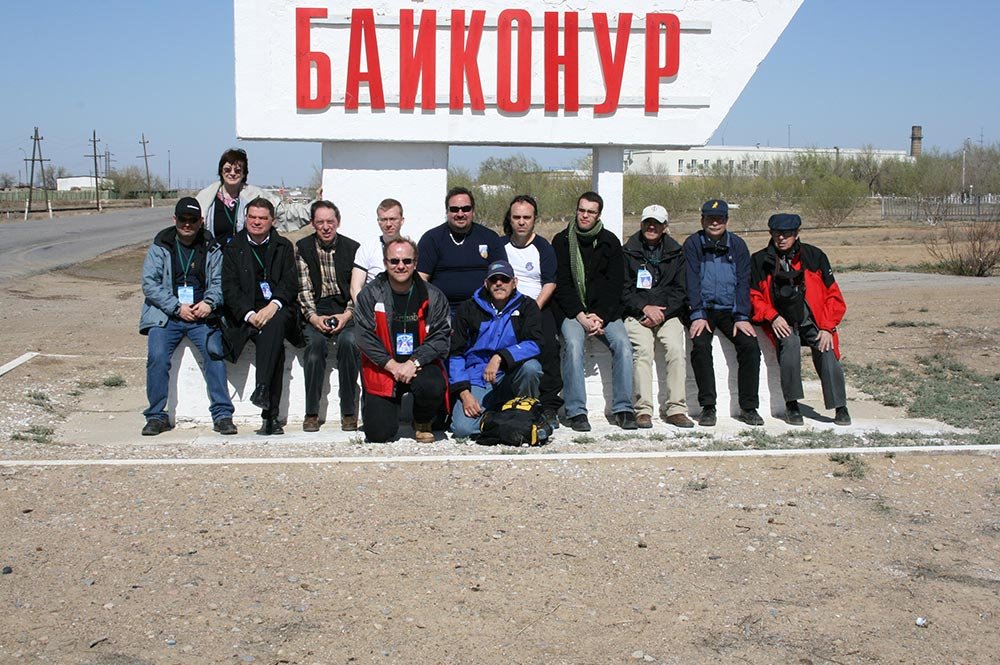 Participants of the Soyuz TMA-12 Expedition
Participants of the Soyuz TMA-12 ExpeditionThe process is not adequate to describe; you must have to see this, just incredible and fascinating at the same time. We shot a group photo and rejoiced together experienced on the successful launch. By Energia, we were invited to an after liftoff party. Russian, Americans and European Space celebrities are parties themselves. Tost to Tost was held with vodka and watered. More beautiful the experience of space cannot be!
An American answered my question, why in Russia a liftoff is taking place at the time and entirely accurately, "Because, it's Microsoft free". This answer was not typical American, but a correct answer.
The return flight to Moscow with a TU-144 of the Moscow city government closed for me this incredible trip. I had returned to Switzerland and, unfortunately, I can't watch the docking at the space and mission centre in Korolyov two days later.
By Andreas Bergweiler and his team, I would like to say thanks for this, that he designed my birthday very warmly. He has the heart and soul of Space, and he is Space. All space enthusiasts, I can only recommend, to advantage this particular service of these guys.
Werner Strasser, July 2008
Werner Strasser, Baikonur July 2008

